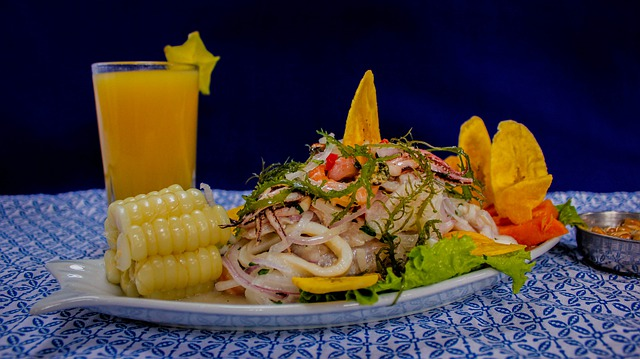When it comes to seeking out the best South American food, people hoping to try something new often have to do a fair amount of digging.
While some cuisines take off and become staples around the world, others are considerably less popular outside of the countries where they originate from. Barring a few exceptions, this is largely true of almost all of the cuisines in South America.
It is also a real shame, as there are countless unique and utterly delicious dishes just waiting to be discovered.
With that in mind, we want to help give you a glimpse into the world of South American cuisines. I will help you discover the best South American food by showing you the top dish in all 12 countries in South America.
That way, once you get a taste for the national dish of each country, you’ll have a better idea of what is on offer in each and where to go looking for even more new things to try.
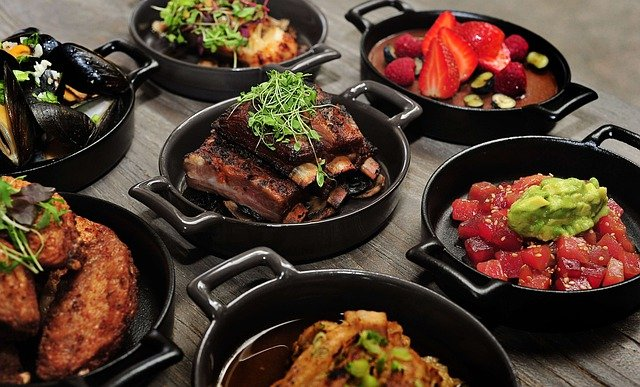
The National Dish Of Argentina – Asado
Asado is the traditional Argentinian style of barbequing. Rather than just a single dish, this national staple of Argentine culture is everything from a way of cooking to a social event.
Meats are cooked on a special type of grill, known as a parrilla, which is usually suspended over an open fire.
The most common meat used in asado is Argentinian beef, one of the most popular foods in the country, as well as one of the best types of steak in the world. Other meats used include chicken, lamb, and pork, as well as types of sausage like chorizo and morcilla.
Vegetables such as bell peppers and onions are often added to the grill, to allow their juices to infuse the meats while they cook. Everything is then served with red wine and salad, to complete the ultimate Argentinian dining experience.
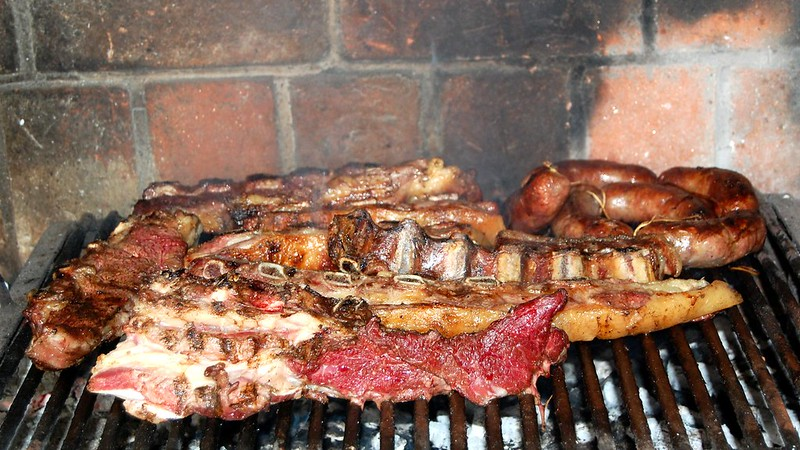
The National Dish Of Bolivia – Salteña
A salteña is a baked, savoury pastry, which is like a cross between an empanada and a traditional Cornish pasty. Created in the 19th century by Juana Manuela Gorriti, while she was living in Bolivia, salteñas take their name from her birthplace of Salta, Argentina.
The pastry is usually filled with a stew of olives, potatoes, raisins, spices, and either beef, chicken, or pork. While uncommon, vegetarian versions are sometimes available, where the meat has been replaced with more vegetables or simply removed altogether.
Salteñas are usually eaten either for breakfast or as a mid-morning snack and need to be carefully eaten from the top down, to avoid any of the hot juices from spilling out.
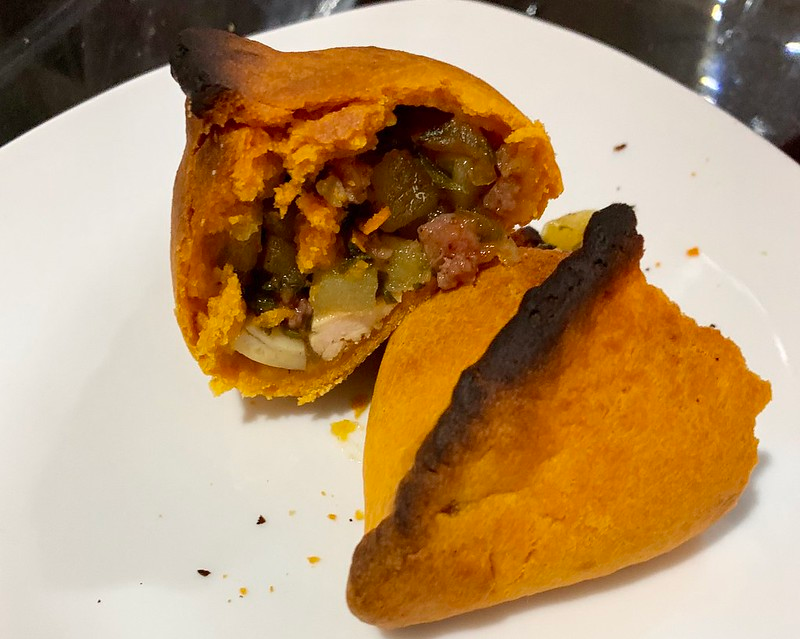
The National Dish Of Brazil – Feijoada Brasileira
The national dish of Brazil is feijoada, a meat and bean stew that takes its name from the Portuguese word for bean, “feijoa”, and is popular in many Portuguese speaking countries around the world.
A traditional Brazilian feijoada, feijoada brasileira, consists of a base of black beans, any combination of bacon, pork ribs, pork trimmings, salted beef, and salted pork, as well as a minimum of two types of jerked beef and smoked sausage.
These are then all stewed together in a salty, brownish broth. Feijoada brasileira is traditionally served with oranges, rice, and a dish known as couve, which consists of diced collard greens stir fried in manioc flour.
Other common accompaniments include bacon, pig’s ears, pig’s feet, or pork, while vegetarian and low fat versions are also available.
Considered a festive dish, feijoada is designed to be enjoyed slowly, and is a prominent feature of Sunday lunches or celebratory meals.
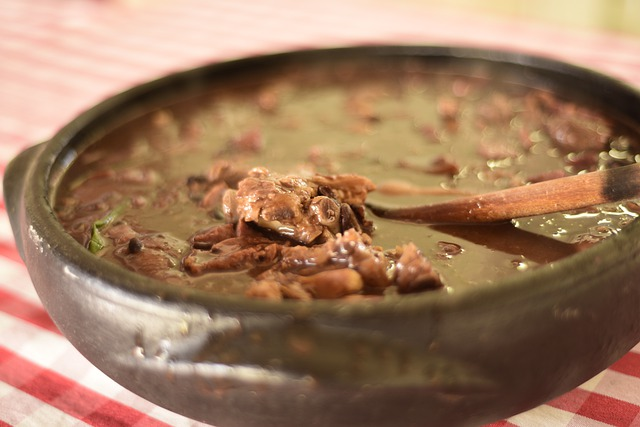
The National Dish Of Chile – Cazuela De Ave
A cazuela is a Spanish word for a cooking pot, and the dish named after it is similar to a thick soup or stew, which consists of a range of various meats, stocks, and vegetables. The version of the cazuela that is considered the national dish of Chile is the cazuela de ave.
Most varieties of the cazuela de ave will be made with beef or chicken, however, lamb, pork, turkey, and even vegetarian options are available. The meat will then be boiled in a pot with chopped carrots and onions.
What makes the cazuela de ave different to regular cazuelas is that each of the vegetables will then be boiled in its own individual pot, allowing for multiple types of stock to be created.
Once everything has been boiled, cazuela de ave will then be topped with fresh aji verde, coriander, or parsley, and served with corn on the cob, green beans, potatoes, squash, and reheated rice.
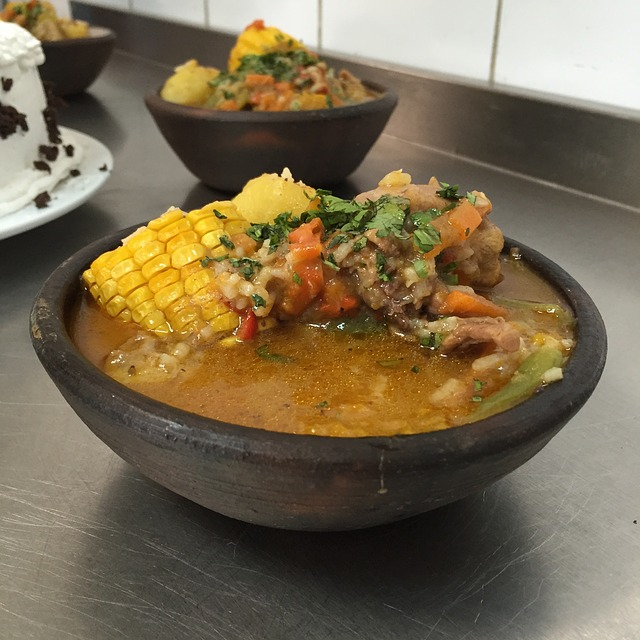
The National Dish Of Colombia – Bandeja Paisa
Bandeja Paisa is a dish that originated in the Paisa region in northwest Colombia and is named after the Spanish word for platter. While considered the national dish of Colombia by most, there are those who oppose this designation, due to it being named after a particular region.
The main feature of the bandeja paisa is that it must contain generous portions of various types of food.
On a traditional bandeja paisa you will find arepa, avocado, black pudding, chorizo, fried eggs, fried pork, ground meat, hogao sauce, lemon, plantain, stewed pork and red beans, and white rice. It is then served with ground panela, mazamorra, and milk.
Two common variants of the traditional dish are an option known as “seven meats”, which adds grilled liver, pork, and steak to the original recipe. Meanwhile, a healthy version replaces the black pudding, chorizo, and pork with a frankfurter, grilled chicken, and salad.

The National Dish Of Ecuador – Guatitas
Guatitas is a unique dish served throughout Ecuador, as well as parts of Chile, which is made from stewed cow stomach, i.e. tripe. The tripe will be repeatedly rinsed in a mixture of salt water and lemon juice, before being cooked for a number of hours, until completely tender.
Once the cooked tripe has cooled, it is then chopped into small pieces and added to a pot containing a range of vegetables that includes onions, peppers, and tomatoes, as well as spices like annatto powder, cloves, cumin, and oregano. Everything is then stewed together.
Guatitas is traditionally served piping hot with potatoes and a peanut sauce. Considered somewhat of an acquired taste, variations made using tuna or vegetables in place of the tripe are also available.
While considered a main meal, it has developed a reputation as a cure for hangovers. As a result, many restaurants in Ecuador offer guatitas on their breakfast menu as well.
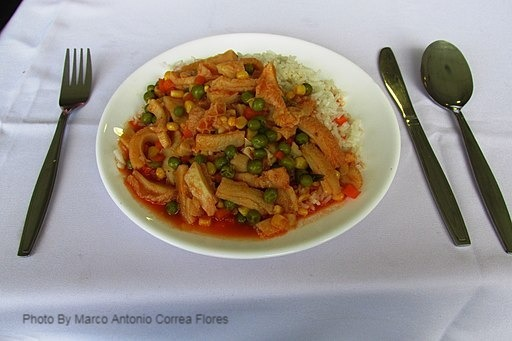
The National Dish Of Guyana – Pepperpot
Guyana’s national dish, Pepperpot is a meat stew that is strongly influenced by the cuisines of Caribbeans and Native Americans.
The base of the stew consists of chilli peppers, cinnamon, and a cassava root sauce known as cassareep. A meat will then be added, with beef, mutton, and pork being popular choices, while chicken is also used on occasion.
Pepperpot will be served with a range of vegetables, including cassava, eddoes, plantains, and sweet potatoes, as well as any combination of rice, roti, and traditional Guyanese bread.
Pepperpot is commonly served on special occasions, such as religious or family events. It is also usually prepared in a large pot and cooked for several hours. What isn’t served immediately can then be stored and consumed for a number of days.
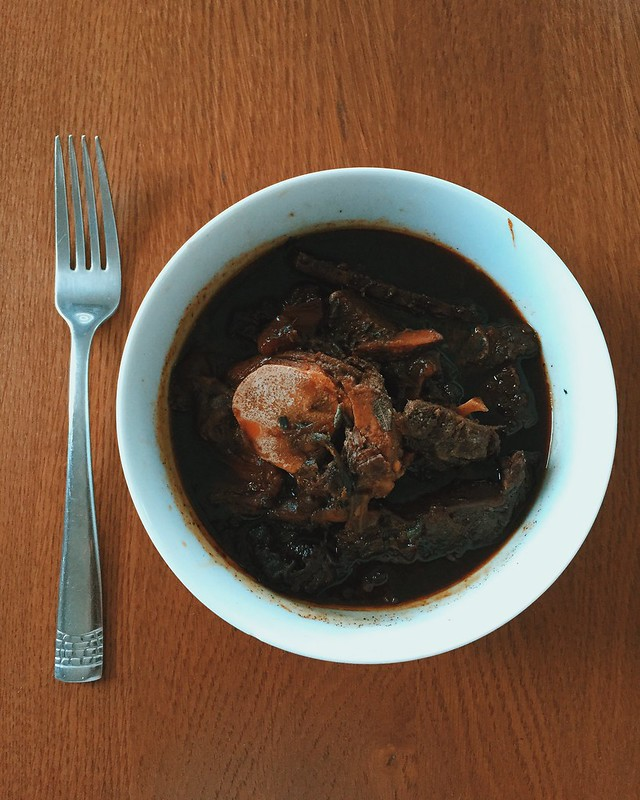
The National Dish Of Paraguay – Sopa Paraguaya
While sopa Paraguaya literally translates to “Paraguayan soup”, the national dish of Paraguay is a spongy, savoury cake that more closely resembles corn bread.
Its name humorously derives from a failed attempt a cook of the first constitutional president of Paraguay, Don Carlos Antonio López, made while attempting to make him soup.
Despite the cook adding far too much corn flour, Don López loved the dish and christened it Sopa Paraguaya in jest.
Traditional sopa Paraguaya is made from cheese, corn flour, cream, eggs, milk, onions, pork fat, salt, and whey. The onions and salt are boiled in a pan, while the cheese, eggs, and pork fat are blended in a bowl.
All of the other ingredients are then slowly added to the bowl and mixed until smooth. The entire mixture is the baked, to produce a beautiful bread with a golden top and doughy interior.
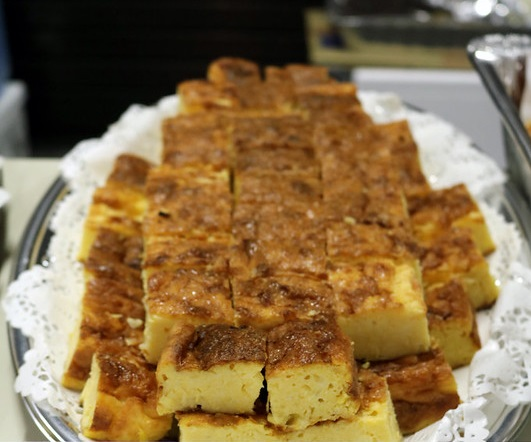
The National Dish Of Peru – Ceviche
Ceviche is a seafood dish that derives its name from the Quechuan word “siwichi”, which translates to fresh or tender fish. It is a dish made from raw fish, with corvina and sea bass the traditional options, and shrimp and shellfish common favourites in modern times.
The chosen fish will be cured using the juices of bitter oranges, lemons, and limes, before being seasoned with chilli pepper, coriander, diced onion, pepper, and salt. Some variations will also use garlic, tomato sauce, and a fish bone broth.
Depending on the type of ceviche, it either needs to be marinated for several hours or served immediately after being prepared. Either way, it is eaten at room temperature.
It is then commonly served with avocado, cooking bananas, corn on the cob, lettuce, maize, rice, and sweet potato. People visiting Peru's capital, Lima, will find it throughout the city.
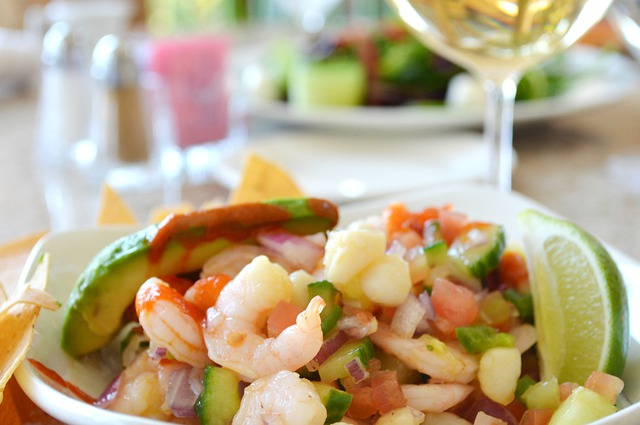
The National Dish Of Suriname – Pom
Pom is believed to have been introduced to Suriname by the Portuguese-Jewish immigrants that ran the plantations there.
Originally known as “pomme de terre”, or potato oven dish, the name was shortened to pom when potatoes were replaced with the root of the indigenous pomtajer plant.
The three core ingredients of the pom are chicken, citrus juices, and the roots of the pomtajer plant. The roots are grated and soaked in the citrus juices, before being added to a sauce of nutmeg, pepper, oil, onions, salt, tomatoes.
A layer of this mixture is added to the base of a pan, and covered with diced and sauteed chicken, before another layer of the root mixture is added to the top.
This is then baked in the oven until the mixture turns a beautiful golden brown colour and is piping hot the whole way through.
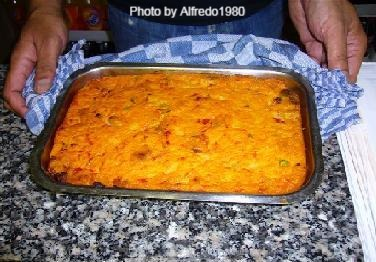
The National Dish Of Uruguay – Chivito
The chivito is a hot sandwich consisting of tender steak, bacon, cheese, eggs, ham, mayonnaise, olives, and tomatoes, in a bun similar to those used for hamburgers.
A chivito is then commonly served with French fries or a Russian salad, while additional ingredients including beetroot, cooked red peppers, cucumber, and peas are often added. It is sometimes also served open in two halves, or without the bun entirely.
Despite the name chivito meaning small goat, goat is rarely used in the meal. The name comes from its creation in 1946 at the El Mejillón Bar, when an Argentinian woman asked for chivito, but the owner had none available, so created and served this to her instead.
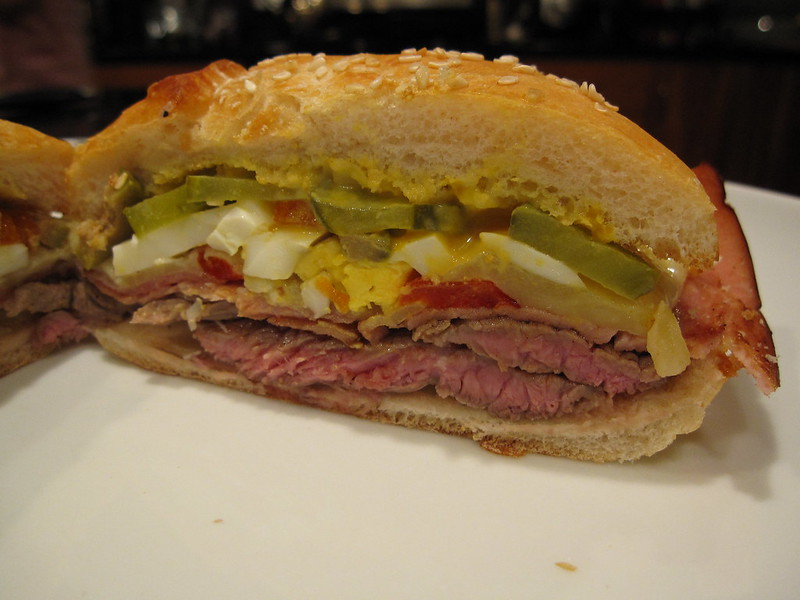
The National Dish Of Venezuela – Pabellón Criollo
Pabellón criollo is a dish derived from the popular rice and bean dishes popular with creole people and throughout the Caribbean. The traditional version of pabellón criollo is a simple meal of stewed black beans, stewed shredded beef, and rice.
Common variations of the dish include the addition of a fried egg or fried plantain slices, and both have even developed their own unique names, pabellón a caballo and pabellón con barandas, respectively.
Less common adaptions include adding granulated sugar or Palmita cheese to the beans or hot sauce to the meat. Some even replace the beef with shredded caiman, capybara, or fish, which is popular during Lent, as beef is banned by the Roman Catholic church at this time.
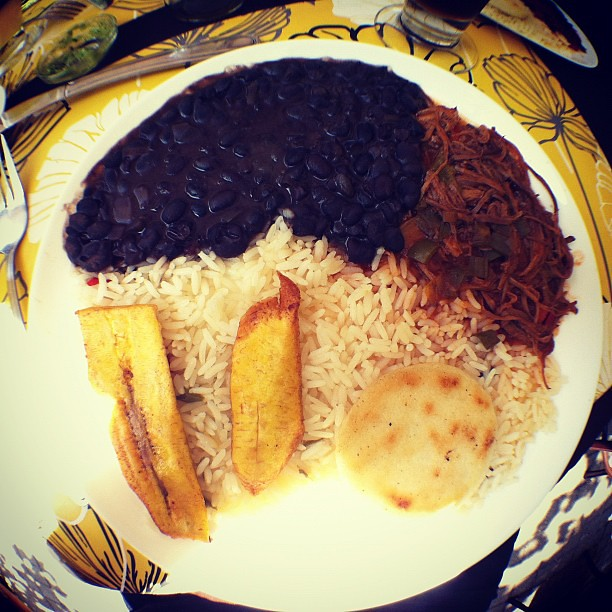
Conclusion
That concludes our list of the national dishes from all 12 countries in South America. This should have given you a good idea of the best South American food on offer and provided plenty of choices to help you expand your taste buds.
Whether you are seeking a country to look deeper into the cuisine of or even trying to plan a vacation with a picky eater, you should now have a solid base to start from. You could even take a South American road trip to sample a few nationalities' cuisines in one vacation.
Once you’re done with the mainland, South America also has a number of islands and territories, each with their own unique cuisines, for you to discover as well.
For those wanting to delve even deeper into the world of food, why not take a look at some of the best dishes to try throughout Africa or the best places to eat in London too.
